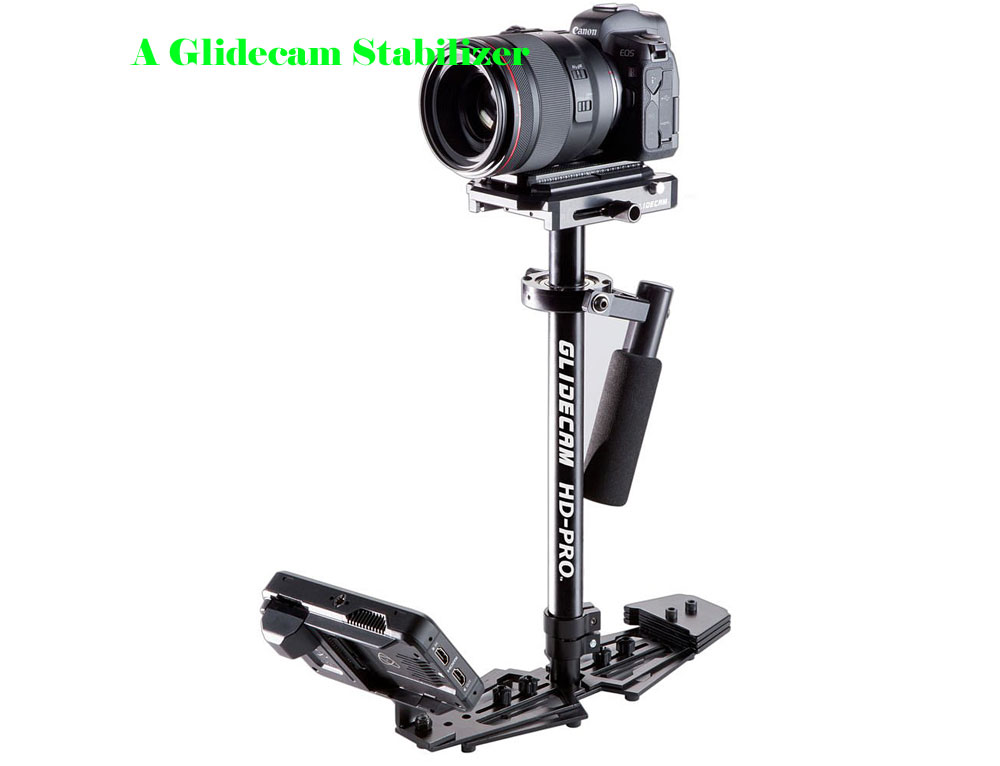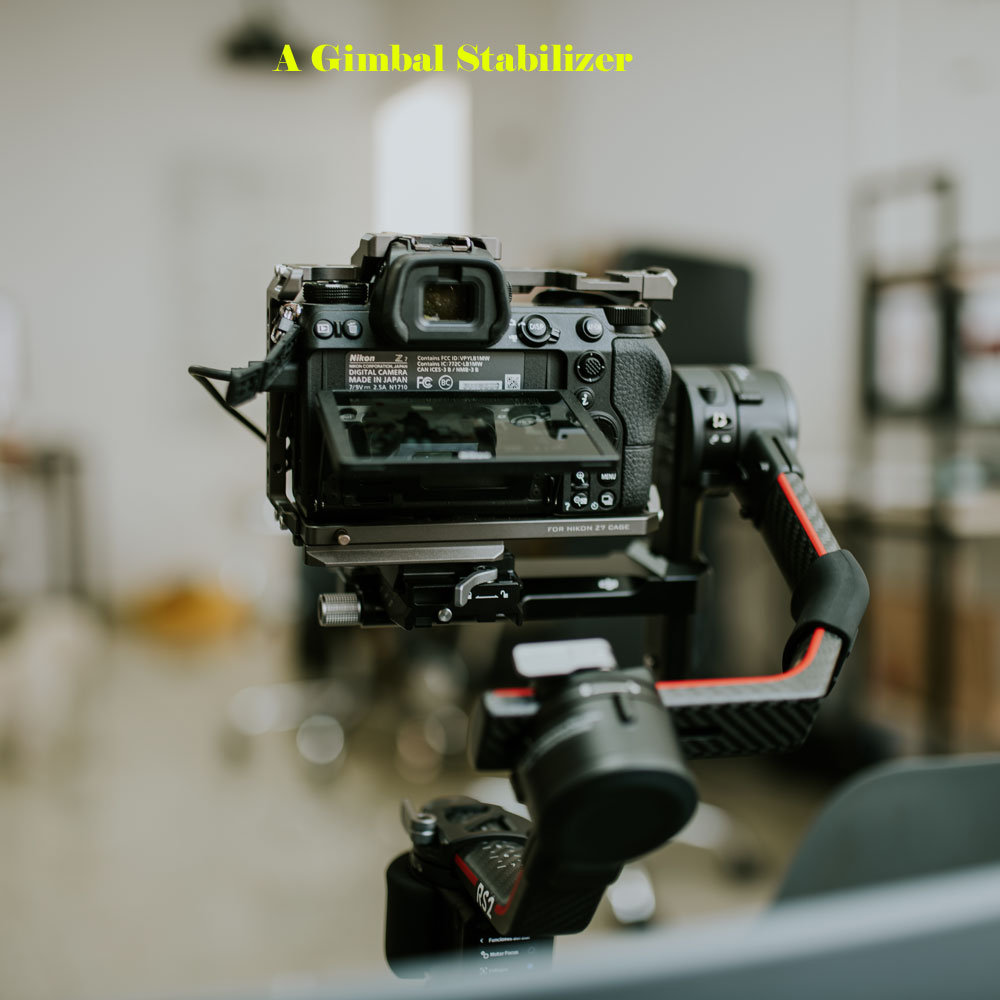Are you enthusiastic about camera stabilization techniques? Do you want to know more about different types of camera stabilizers? Here we will present the two contenders, Glidecam vs Gimbal, very well-known devices for camera stabilizations.
Many digital cameras have a built-in image stabilization system to compensate for camera shake and to yield clear photography. However, additional stabilization accessories are also utilized widely in photography and videography to get further enhanced quality.
The topic of Gimbal vs Glidecam has been in discussion and debate for a couple of years. Many people argue in favor of a glidecam while others talk in favor of a gimbal. That’s why; we will give you a thorough comparison of both the stabilizers about their design, features, and performances in different areas of photography.
What is a Glidecam
A glidecam is a mechanical stabilizer to balance the camera with a counterweight in different positions to eliminate camera shaking problems and to produce natural and crispy look pictures and videos. It is a handheld device that uses manual control of stabilization without any battery power or motor.

It has a holding capacity of about 10 pounds of camera weight. There are many advantages of using a glidecam for making attractive and high-quality videos and snapshots. Glidecam HD PRO, Glidecam 2000, Glidecam 4000, Flycam HD-5000, and Gidecam Devin Graham signature series are well-known models for Glidecam stabilizers.
Table could not be displayed.What is a Gimbal
A gimbal is an electronic stabilizer that uses battery power and motorized movements for balancing the camera in different positions to produce clear snapshots and videos. It’s an automatic stabilizer that requires less effort from the operator.

A gimbal can hold lesser in camera weight than a glidecam. But it is a compact and powerful tool that gives so much work convenience and comfort for the camera operator. DJI Ronin SC, DJI RS 2, Zhiyun WEEBILL S, and Zhiyun CRANE 3s are reputed models for 3-axis gimbal stabilizers.
Table could not be displayed.Glidecam vs Gimbal- Features for both stabilizers
There are many useful features for Glidecam vs Gimbal, making them much-wanted and the best accessories for camera shootings. Many people ask this question-how to use a glidecam? Before we proceed to compare different features for both the stabilizers, you are recommended to watch the video for information:
Design
Glidecam: Mainly designed with metallic parts and counterweight for manual control and balancing of digital cameras. There is no battery power or electronic components.
Gimbal: Mostly consist of lighter metallic parts and electronic components. The device uses battery power to do the automatic balancing with the motor. You need to be much careful while using it since it has delicate electronic parts that are susceptible to damage by falling or hitting any object.
Camera setup and Balance
Glidecam: It can hold almost all big sizes of DSLR or Mirrorless cameras in the metallic baseplate. Balancing is done by manual adjustment of fixing screws. Hence operator needs to grip the handle in one hand and shoot photos by softly touching another hand to the body.
Gimbal: It has got some limitations to use with different cameras up to a certain weight which is much lesser than the glidecam. One needs to attach the camera with it, balancing is done automatically by programmable motorized movements.
Learning curve
Glidecam: It takes some time for learning its adjustments and operational features as everything is manual. The operator needs to switch hands between different screws for adjustments.
Gimbal: It requires a much shorter time to learn a gimbal operation since it’s mostly automatic. Only you need to fix the camera in the holding device and leave it to the gimbal for the rest of the job.
Durability
Glidecam: It is much more durable since it is very rigid and weatherproof. It has no potential damage from dust, water, or adverse weather conditions.
Gimbal: It will get fewer points for durability because of its delicate and damageable electronic parts. That’s why a gimbal is not suitable for use in harsh environments or weather conditions.
Maintenance
Glidecam: No such maintenance is required for a glidecam. No battery or motor replacement is required. No firmware update is needed.
Gimbal: Need to check battery conditions if OK and other controlling parts for error or malfunction. Always need to keep safe from dust and moisture.
Ergonomics
Glidecam: Due to its weight, it is a bit stressful to work with it for a long time shootings.
Gimbal: Since it is lighter in weight and compact in size, it provides nice and smooth ergonomics for shooting activities.
Price
Glidecam: Price is dependent on various models; however, because it has no electronics, no battery, no motor, and no programmable controlling devices thus making it is cheaper than a gimbal.
Gimbal: The price is a bit higher because it has a lot of electronics and automation. A gimbal uses much more advanced technology and is convenient to use in most cases. If you don’t have limitations in the budget, then it is worth going for a gimbal.
Gimbal Vs Glidecam Performances comparison
It is needless to say that devices are mainly compared and judged by their performances in practical use. So far we have discussed the design and other features for both stabilizers. Now we would like to look into the performances for a head-to-head comparison.
Operation &control
Glidecam: It is heavier for metallic parts and so is hard to continue long-time shootings. One needs to spend some time learning and practicing balancing task and operations.
Gimbal: It is much easier to master its operation and to continue daylong shootings with a gimbal since it is lighter than a glidecam. Also controlling is mostly automatic and user-friendly.
Image stabilization
When it comes to image stabilization, it has been found that a glidecam shows better performance than a gimbal in some cases. A glidecam can sustain more weight than a gimbal making it more versatile for use. Also, a glidecam is quicker in balancing than a gimbal.
For general video making, a gimbal shows better performance than a glidecam. Although many people argue that glidecam video footage is stable and natural in quality.
However, for action sports or action films with a faster twist and turn, glidecam footage looks much more natural and stable than the footage of a gimbal, making it superior in quality.
So, how does a glidecam work? You can watch this video for performance comparison
360 Degree video shootings
A glidecam need to rotate manually for 360-degree shootings, hence proving to be less suitable for accuracy in this type of shooting.
On the other hand, a gimbal shows to be stable and smooth for 360-degree video shootings for its automation, yielding superior video quality.
Panning
Panning is the camera shooting with movement side by side along with the horizontal axis. From the real-life use and reviews of video quality, it has been observed that a Glidecam gives smooth, sharp, and natural videos without shaking than a gimbal does. Hence a Glidecam is a winner in this situation.
Changing Lenses
During a photoshoot, changing lenses from one size to another is quite an essential thing. So you need to ensure that changing lenses doesn’t waste much of your time.
A glidecam takes slightly less time for changing camera lenses than a gimbal. Also, it can take heavier long lenses very quickly and effectively.
Battery life and charging
A glidecam is certainly the winner in this aspect since it doesn’t require any battery or charger. The camera operator may continue uninterrupted shootings without bothering about battery charging.
But a gimbal is mostly dependent on battery power, so you need to make sure that the battery is fully charged before starting your photo shooting. Also, you need to check the battery life in hours if you want to purchase a gimbal.
Frequently Asked Questions (FAQ)
Is a glidecam better than a gimbal?
Well, it’s a long debatable topic. The answer may be ‘yes’ or ‘no’ based on different situations. My quick judgment is-
General video making or Vlogging: Gimbal is better for its excellent and smooth quality output.
Action Sports: Glidecam is superior for producing natural footage.
Hiking/cycling/skateboarding video: Glidecam is a better choice for these cases as it is more responsive and smooth for quick movements of subjects.
Real-state video making: Gimbal is far better than glidecam.
Wildlife video: Both Gimbal and Glidecam are suitable however, Glidecam is better in rough conditions.
Car videography/ rolling shots: Gimbal shows better performances than a glidecam.
Is a glidecam a gimbal?
Glidecam and a gimbal are two different devices serving a common goal. Glidecam is a mechanical stabilizer whereas a gimbal is an electronic device for balancing the camera.
However, both instruments are intended for external stabilization of the camera to produce crispy snapshots and natural-looking videos.
What is better than a gimbal?
A gimbal is an automatic and programmable gear for stabilizing the camera shaking problems. It uses modern and advanced technology for stabilizing the camera for smoother and more comfortable photo shootings.
A gimbal is user-friendly and requires less time to adopt operation. It is light and portable for the convenience of traveling. A glidecam may be the contender for a gimbal for some specific situations. In my opinion, considering overall performance, a 3-axis gimbal is a perfect tool as a camera stabilizer.
What is the difference between a gimbal and a stabilizer?
A gimbal is an electronic and programmable device for stabilizing the digital camera which means a gimbal is a kind of external stabilizer.
A stabilizer is a device to stabilize the camera from a camera shake. It can be an internal or an external device for a camera. Many cameras feature built-in stabilization techniques for clear and smoother photo shootings. Tripod or monopod is also considered a camera stabilizer for photography.
So, we can conclude that all gimbals are stabilizers but not all stabilizers are gimbals as there are other types of stabilizers for cameras.
Conclusion
So, guys, we have discussed different aspects of camera stabilization and a comparative review of features and performances between the strong contenders, Glidecam vs Gimbal. I hope now it will be much clear to you for their best fit or use depending upon your requirement.
You should not be fooled by any kind of situation where one performs better than the other; rather you should carefully use your judgment to select the best tool that you need for your photography or video.
If you have any questions or comments, feel free to send an email.
Leave a Reply